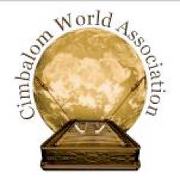The 8th CWA Congress in Beijing, China
The 8th YANGQIN World Congress in China
Information
Place: Beijing••China
Time: October.14- 19 , 2005
Organizer: Organizing Committee of The 8th YANGQIN World Congress
For detail, please refer to the attached file.
:download:Information on the 8th congress in China (MS Word Document)
:download:Application Form for the 8th congress in China (MS Word Document)
… The Chinese dulcimer and its development … continued:
The Chinese dulcimer and its development
The dulcimer, which is a conventional and established part of the Chinese orchestra, has been affirmed as a Chinese national musical instrument. Musicians have a lot of insight on the origin of the dulcimer. Most academic circles generally agree on it “coming from abroad by sea”, which is very likely.
In the early days of the Chinese dulcimer, it had a similar situation as it had in Europe, which was based on the folk art of performance. “Shuochang” is often accompanied by a small orchestra, which is composed of the dulcimer and other Chinese stringed musical instruments. At that time the dulcimer was quite popular in a considerably large area. Guangdong province, in south China, is considered the first area where the dulcimer spread to.Over the course of many years, the dulcimer has become a typical instrument in Guangdong Province. In addition many regional dulcimers have originated including, the Sichuan Dulcimer, Northeast Dulcimer, Jiangnan Sizhu Dulcimer, Yunnan Dulcimer, Shi’en Dulcimer, and Xinjiang Dulcimer. There are many diverse regional dulcimers, among which the Guangdong dulcimer, Sichuan Dulcimer, Northeast Dulcimer and Jiangnan Sizhu Dulcimer comprise “the Four Schools” in China. Recently the Chinese dulcimer has undergone many changes in which the most outstanding is the tool and the sound of the phoneme. There has been a trend in recent years that more and more dulcimers are being used in Chinese national orchestras. A great deal of orchestras now have two dulcimers. Even an all dulcimer orchestra has emerged. China has a long history and the Chinese particularly appreciate the preservation and the development of their culture. Once the dulcimer has been recognized as a Chinese national instrument, its development has been incorporated into the Nation’s education system. Large amounts of musical colleges in China have undergraduates and postgraduates who are majors in Dulcimer Performance and Dulcimer Education. They have excellent skills and they become professional musicians after they graduate. Those, who do not necessarily become professionals, stay in college to teach how to play the dulcimer or do some research work. Because of the complete education system, the dulcimer develops rapidly in China. Nearly every city in China has Teenagers’ Clubs or Workers’ Clubs, which are the center for the young to learn all kinds of extracurricular arts. It is not new thing to have special classes for music in middle schools or primary schools. Furthermore, there are private music schools, night music schools and training courses, even training classes set in musical shops. Professional dulcimer teachers take part-time jobs in these classes as well as in their own homes. Every weekend, parents who want their children to become musicians take their kids there to learn how to play the musical instruments. The dulcimer attains its position in the social educational system and develops considerably. In the 1980’s, China had its own professional academic dulcimer society, which is an organization for dulcimer performers and educators. China has the largest population in the world. As one kind of musical instruments is adopted and spread in China, the number of people who learn and master it will increase to a larger degree. Take the dulcimer as an example, I am sure that nobody can calculate the exact number of teenagers who are learning how to play the dulcimer, much less come up with the total number of people who are fond of can plan the dulcimer. It seems embarrassing, but it is a great contribution to the dulcimer’s development in the world that numerous people are play the dulcimer.
Before the 1980’s, musicians in other countries did not know much about the Chinese dulcimer and its condition. Now, with the development of the Chinese economy and the increased contact with the outside world, knowledge about the dulcimer is changing.



